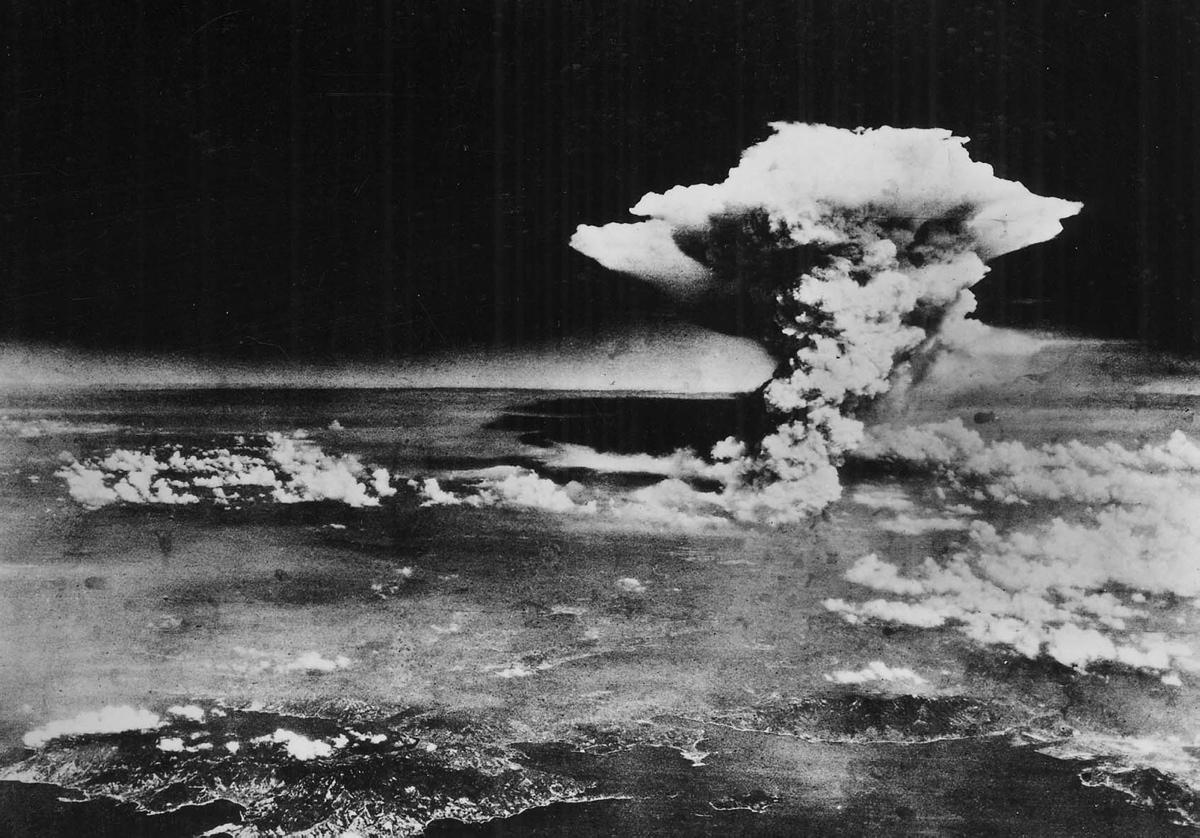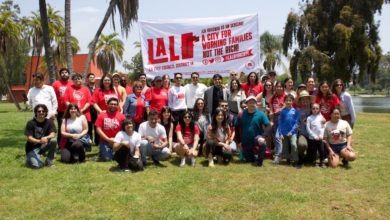The following is an adapted talk from the Nov. 10 Socialism Conference in Los Angeles.
Class struggle occurs whether we are aware of it or not. But neither struggle alone nor class consciousness alone can bring about such a radical transformation of society as a socialist revolution. A socialist revolution needs a conscious leadership that organizes society and directs it with the correct tactics and strategy to defeat its class enemies.
Before you even came to this conference, probably everyone in this room understood, at least to some extent, the level
|
Throughout today’s talks and workshops, you have heard about a wide array of issues plaguing society. But they have one thing in common: They are all caused or exacerbated by the capitalist system. But this conference doesn’t aim to just present the problem. Our conference is to put forward a solution. We need to build a party that is capable of one day leading our class to a revolutionary victory and bringing about socialism.
The history of class struggle makes us optimistic about the possibility of revolution in this country, however far off it may seem at a particular time.
Nov. 7, just a few days ago, marked the 90th anniversary of the Russian revolution, the landmark victory of the international working class. It was the first time ever that the organized working class was able to take power and hold it. It provided the workers of the Soviet Union with the power to direct the country’s vast resources and potential in its own interests.
The revolution: from February to October
Prior to the revolution, Russia was a feudal-based country led by a Czar and severely underdeveloped. In 1914, the Czar led Russia into World War I, which cost the lives and livelihoods of millions of workers. They died not only from battle but also from miserable living conditions and food shortages.
As discontentment with the war grew, so did the self-organization of the workers. In factories, communities and in the military units, workers and soldiers began developing councils called soviets, which functioned as alternative governing units to the Czarist regime. Workers likewise flocked to the three most important parties on the left—the Mensheviks, the Social-Revolutionaries and the Bolsheviks—which exercised leadership within the soviets. The Bolsheviks actually made up a minority in these soviets for most of the time up to the revolution in November 1917—called the October Revolution because Russia then operated on a different calendar.
In February 1917, Russian women led a strike and march on International Women’s Day. The event sparked a great social upheaval, which eventually overthrew the czarist regime and set up a provisional government. In the course of a few weeks, the workers and soldiers of Russia had done away with centuries of czarist rule. It was the first stage of the revolution.
But what sort of government and economic system would follow? There was a new central government, supposedly led by democrats, but the soviets, the workers’ council, continued to operate. The question immediately emerged of how the two systems of rule would relate to one another. The Mensheviks and Social-Revolutionaries in the soviets were content to let the provisional government lead the way to a capitalist democracy.
In April 1917, Bolshevik leader Vladimir Lenin returned from exile and set forth a proposal called the April Theses. The theses outlined the solution to the contradictions riddling Russian society. It called for an end to the provisional government and for “all power to the soviets.” The Bolsheviks were initially ridiculed for suggesting the newly formed government should be overthrown as well. The provisional government called the Bolsheviks traitors and “German agents,” and had the party’s leadership arrested.
But the provisional government, still tied to capitalist interests in Russia and abroad, would not end the war. The only force to lead with the interests of the vast majority of Russians was the Bolshevik party. It presented a simple platform: “bread, land and peace.” This revolutionary slogan spoke to the interests of the workers and the peasantry, which made up the largest classes in Russia at the time. The Bolsheviks’ demands challenged the very existence of the capitalist class because they raised the needs that the provisional government could not fulfill.
By the time October came around, the provisional government had lost its mass support. The vast majority of the country embraced the demands for “bread, land and peace” and recognized that Russia’s capitalist class was unwilling to fulfill them. The Bolsheviks’ slogan “all power to the soviets” became the order of the day. Significant sectors of the military had been won to the side of the Bolsheviks because of the party’s resoluteness to end to the war.
As the war campaign deteriorated, the peasant soldiers increasingly abandoned their posts and returned to their towns and villages. They immediately began to seize the large estates of the aristocratic ruling class. Lenin called this the peasant revolution. Simultaneously, the Bolsheviks had won majority support within the soviets. The time was right for insurrection.
Ninety years ago, the Bolsheviks led the first armed insurrection by the working class that took and held onto power, organizing a workers’ state in the interests of the working class.
The role of the party
This victory was only possible because of the guidance and organization of the Bolshevik Party. Their party had not always been the most popular political organization in Russia. But the Bolsheviks’ tactics and strategy, their straightforward slogans and clearheaded approach united the class with the party at the critical moments and pushed the struggle toward socialism.
The Bolsheviks did not make the revolution overnight. They had trained for years, organized protests, work stoppages and strikes. They had a revolutionary newspaper, a collective organizer for the party and workers. They passed out leaflets and pamphlets day in and day out. Because of this and other training, the Bolsheviks were able to seize upon the revolutionary crisis caused by World War I.
The Iraq war is a crisis for U.S. imperialism, but it is not yet a revolutionary crisis that threatens the very existence of the capitalist class. The capitalists create their own crises, and we have no control over when the next will occur. What we do have control over, however, is the organization that we build right now and how we ready our class for struggle.
That’s what we are doing as the PSL. We are building the type of organization that will provide leadership during a revolution. That organization must be a strong, unified and multinational organization; it must be rooted and tested in struggle.
As Lenin said, we should build a revolutionary party. If we wait, it will be too late. Without a revolutionary party, a revolutionary opportunity can never be transformed into a revolutionary victory.
Joining the party is not just about doing volunteer work. We are training ourselves mentally and physically to be able to become part of the working-class vanguard. We are involved in a number of the day to day struggles: through our work with and within unions, against the war, against racism and against all forms of exploitation and oppression.
We struggle to one day bring about a radical transformation of society and build a system based on peace, justice and cooperation. On the 90th anniversary of the Russian revolution, let’s reflect on the invaluable leadership provided by the Bolshevik party. Let’s use that example and build our own. Join us in struggle!




